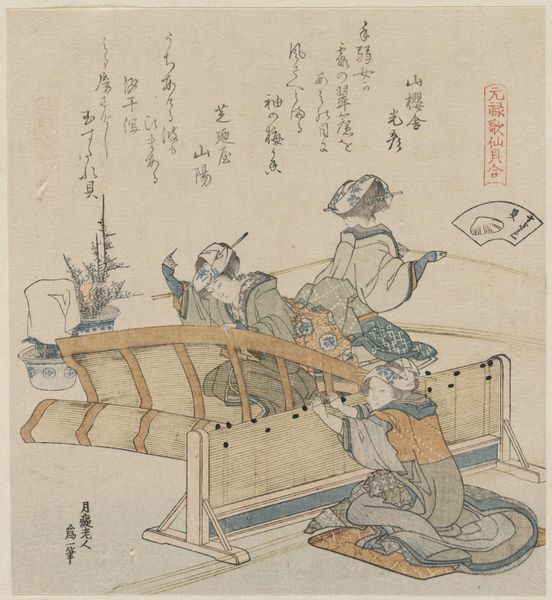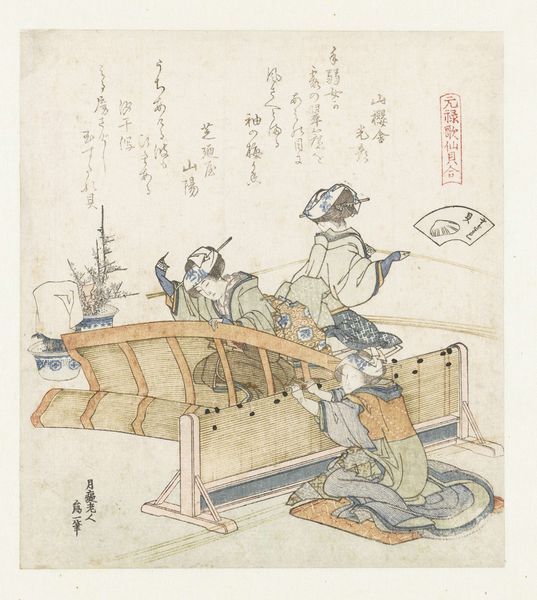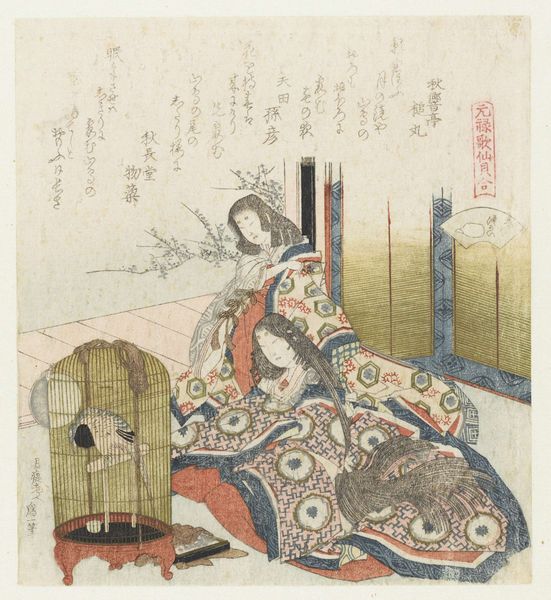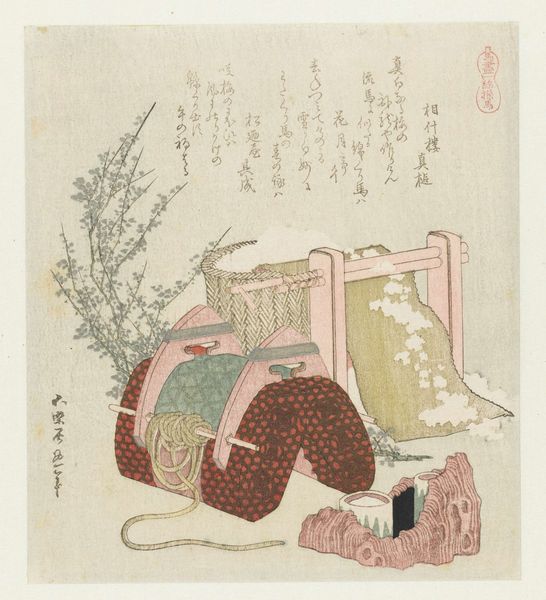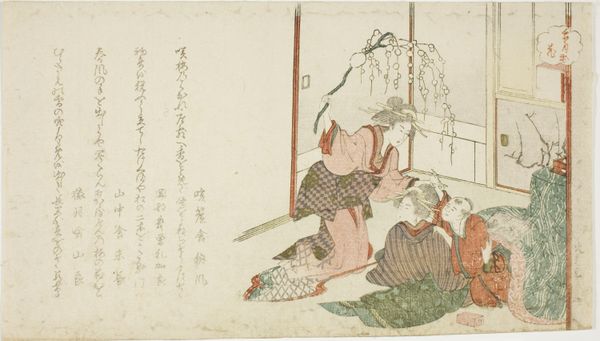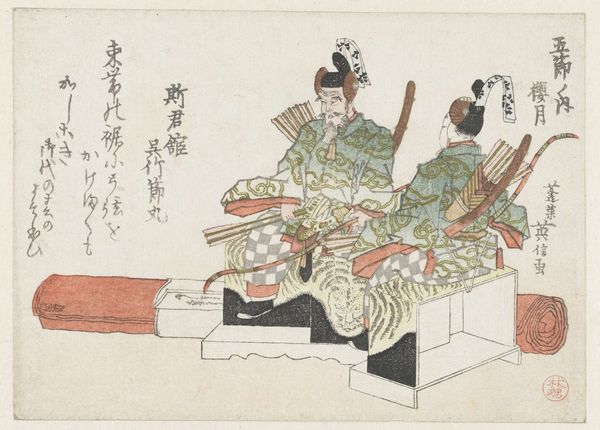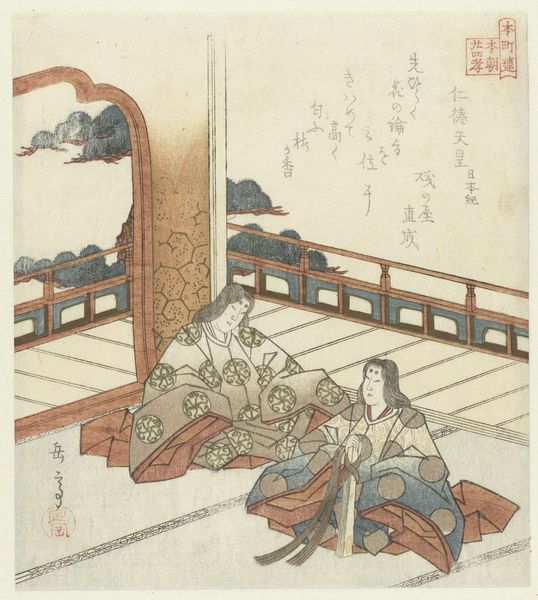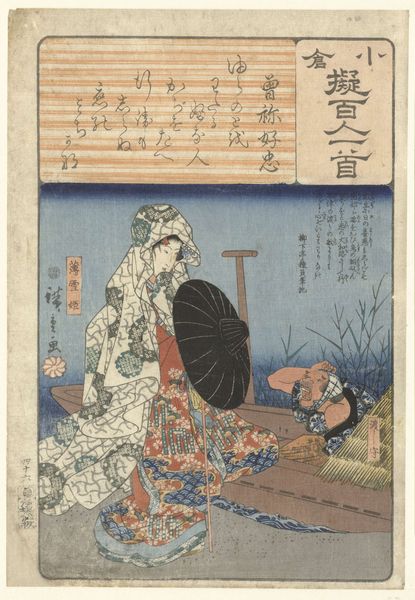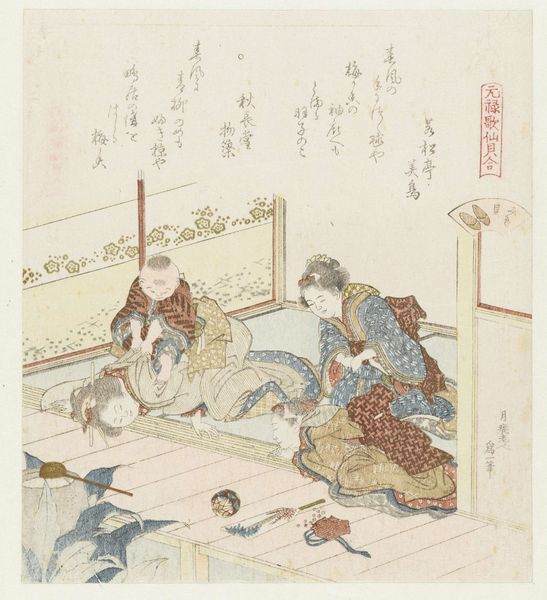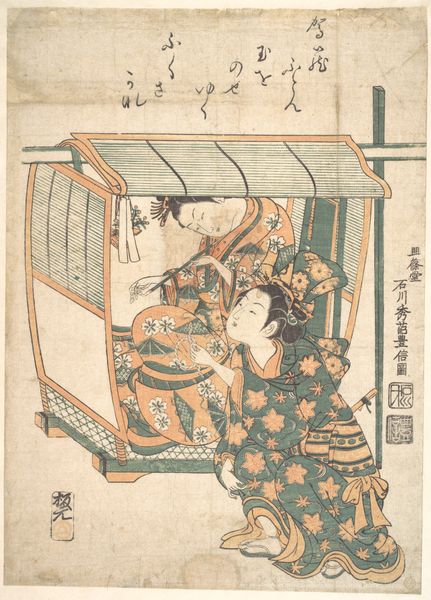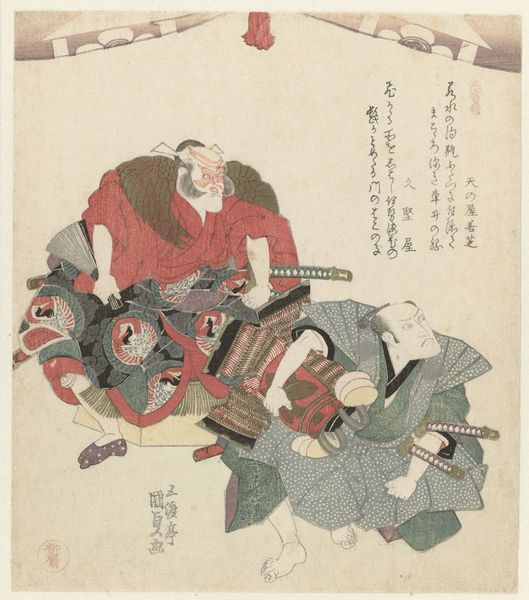
print, woodblock-print
# print
#
asian-art
#
ukiyo-e
#
figuration
#
woodblock-print
Dimensions: height 203 mm, width 177 mm
Copyright: Rijks Museum: Open Domain
Curator: What a visually captivating scene! I'm drawn to the print’s overall atmosphere, evoking a feeling of intimacy and contemplation. The women almost appear to be in a moment of quiet focus. Editor: Interesting observation. We are looking at "Bamboescherm schelp" a woodblock print created around 1821 by Katsushika Hokusai. My initial thought is about the materials and process here: the woodblock printing process itself, and the use of bamboo for this instrument… what was Hokusai interested in communicating? Curator: Well, Hokusai situates these women, presumably geishas, within the refined world of Edo-period Japan. Their elaborate garments and poised stances suggest a cultivated existence. It seems clear to me that it’s not merely about the object, but more a portrait of class and cultural performance. Editor: I agree, though let’s examine further: the labour needed to create the instrument, to harvest and cure the bamboo and craft the lacquered frame – and not forgetting the process of creating a coloured woodblock. Are we supposed to acknowledge this industry in a work that foregrounds leisured women? And, in light of that, consider what is elided in these portrayals? Curator: Those questions about social labor certainly add another layer. One could explore it in relation to feminist theory that reveals a dynamic tension between visible luxury and unseen labor. It speaks to the systemic exploitation inherent in such displays of affluence. Editor: Exactly. Considering Hokusai's choice to render the musical instrument itself suggests an interest in exploring the means through which art is produced. The very act of making the image itself. Curator: Hokusai encourages us to deconstruct what luxury actually means, what its cultural costs are, and to look at those unseen infrastructures that contribute to what’s put on display. Thank you, it certainly encourages new dialogues for me to continue thinking about. Editor: And by acknowledging both the labor and cultural significance, we appreciate not just the surface aesthetics, but the full story behind “Bamboescherm schelp."
Comments
No comments
Be the first to comment and join the conversation on the ultimate creative platform.
